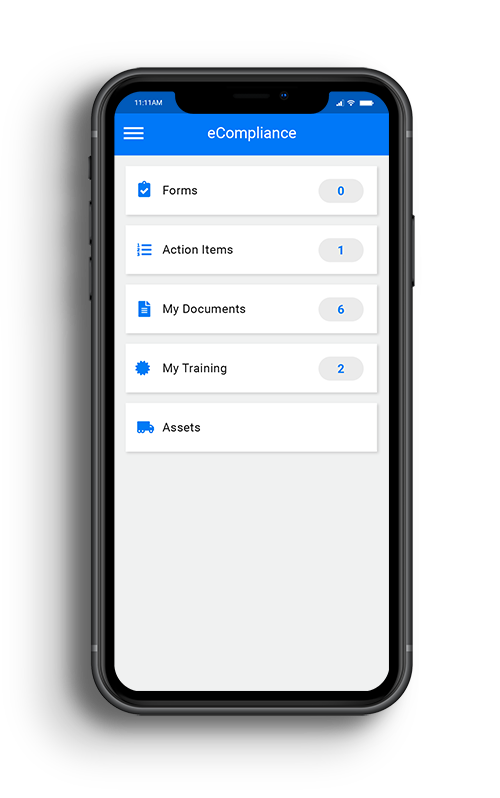
PUBLISHED
February 1, 2016
WRITTEN BY
Victoria Formosa
Employers across all industries have the obligation to do what’s reasonably necessary to ensure the safety of your employees. However, to ensure that you have a truly safe jobsite, workplace safety has to be more than a legal obligation; it needs to be a top priority for executives and the company as a whole.
Here are the top 5 ways to improve workplace safety.
1. Demonstrate management buy-in
- Management buy-in is the most important element for improving workplace safety. Without commitment from upper management to create safer jobsites, the motivation and drive for employees to follow the procedures/policies necessary for creating a better safety program deteriorates. Management must lead by example and demonstrate that safety is their top priority in order for employees to follow suite.
- Management must also communicate the value in building a safer jobsite and relay the information to onsite workers in order to create transparency around the values and goals of their safety program. By communicating the value of safety, management can prove to employees that they are valued by the organization and ensure that their buy-in translates into employee buy-in as well.
2. Ensure you have comprehensive formal training and procedures in place
- Are your employees competent? As an employer, it’s important to take the time to properly train new and existing workers on your jobsite to ensure they truly understand their role and responsibility towards keeping themselves and others safe.
- Are your employees informed? It’s one thing to know how to operate specific equipment and machinery; however, employees must also know what to do or how to act in various situations or scenarios that may arise (i.e. emergency preparedness plans).
- Are your policies and procedures documented? It’s imperative for all employees to have immediate access to documented safety policies and procedures at all times. As an employer, having a way of recognizing when an employee has read and acknowledged a document will not only ensure that each of your workers receive consistent information, but also allow organizations to prove due diligence of a strong health and safety program while holding individuals accountable when necessary.
3. Create a culture of constant and open communication
- Constant and open communication throughout an organization is imperative for improving jobsite safety. By creating a culture of open dialogue, employees are more likely to be motivated to communicate their own concerns and ideas regarding workplace safety. This can also have drastic effects on worker engagement in the safety program. If workers feel like their voices will be heard, they will be more likely to participate in the safety program which will ultimately lead to improvements in jobsite safety overall.
- Regular site team meetings such as toolbox talks or weekly safety meetings act as a platform for open dialogue and easy communication. Whether there’s a pressing issue that needs attention or a change in a policy or procedure, having a platform for discussion amongst employees and management is essential in creating a strong safety culture and improving worker engagement in safety, all of which will improve jobsite safety.
4. Invest in Achieving and Maintaining Safety Standards
- As safety performance becomes increasingly important to major project owners and developers, there is an increasing need for companies to meet specific industry standards when bidding on major projects. For example, as of January 1, 2016, Ontario’s major construction buyers including The City of Toronto, TTC, Metrolinx and Infrastructure Ontario require COR™ as a prequalification requirement for specified high valued contracts.
- To achieve COR™, your organization must prove that they have an operational, fully functioning safety program. Therefore, the certificate, itself, mandates a company’s dedication to a strong health and safety program which will result in a safer workplace. In other words, these safety standards not only open the doors to high valued contracts but they also present an opportunity to re-evaluate and improve your safety program.
5. Invest in technology
- Creating a safer jobsite is not just about communicating, training and meeting certain standards, it also requires having the tools necessary to effectively run and manage a continuously improving safety program. This is where the current status quo of paper processes within the safety industry fails us and where technology comes into play. Paper processes severely limit management visibility into safety performance and makes it very difficult to communicate between multiple jobsites and from the jobsites to head office. Technology such as safety software, on the other hand, creates transparency into safety performance for management. This not only helps management make important decisions for improving jobsite safety but also easily communicate the strengths and weaknesses of their program with the rest of the company.
- With the ability to electronically document your procedures and policies and make them immediately accessible, you eliminate the need for paper trails and improve the speed and ease with which safety information is communicated throughout the organization.
- Through the use of software, contractors are able to decrease administrative work, have access to real-time reporting capabilities, and measure success using valuable KPIs, all of which will help to significantly improve jobsite safety.
Whether you’re working on construction site or a substation or in the oil field, jobsite safety should be at the top of mind for any at-risk organization. Executives of at-risk companies should be dedicated to continuously improving their safety program, not only to reduce the risk their employees face but to help improve their business over all as well. By following these 5 tips, organizations are able to reduce risk, enhance worker engagement in the safety program, gain a real-time view on safety performance and ultimately, create a safer jobsite.
Learn How You Can Get eCompliance
Complete this form and one of our safety experts will be in touch.

